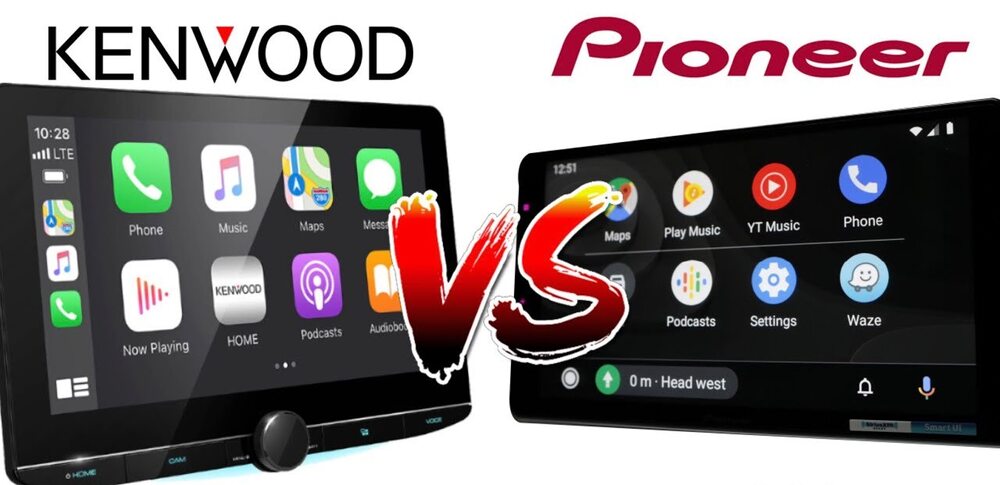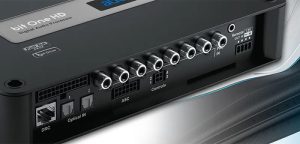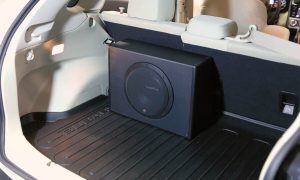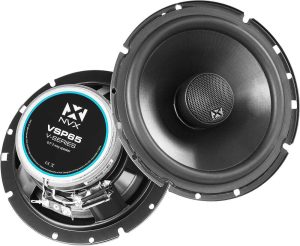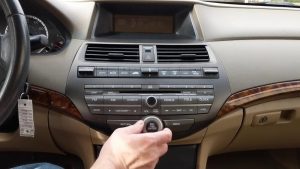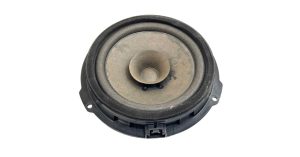Choosing the right head unit for your car audio system sparks excitement, but it also demands careful thought. Kenwood and Pioneer, two giants in the car audio world, consistently deliver top-tier head units packed with cutting-edge features. Both brands boast loyal fanbases, innovative technology, and a wide range of models to suit various budgets and preferences. So, how do you decide between Kenwood and Pioneer in 2025? This comprehensive guide dives deep into their features, performance, design, and value to help you make an informed choice. By comparing their strengths, weaknesses, and unique offerings, we’ll ensure you find the perfect head unit for your ride.
Contents
- Why Choosing the Right Head Unit Matters
- Kenwood Head Units: A Closer Look
- Pioneer Head Units: A Deep Dive
- Head-to-Head Comparison: Kenwood vs. Pioneer
- Which Brand Suits You Best?
- Installation Tips for Kenwood and Pioneer Head Units
- Future Trends in Car Audio for 2025
- Customer Feedback and Real-World Performance
- Where to Buy Kenwood and Pioneer Head Units
- Final Thoughts
Why Choosing the Right Head Unit Matters
A head unit serves as the heart of your car’s audio system. It controls everything from sound output to connectivity and even navigation. A high-quality head unit transforms your driving experience, delivering crystal-clear audio, seamless smartphone integration, and intuitive controls. Kenwood and Pioneer have long dominated this space, each bringing distinct advantages to the table. Whether you prioritize sound quality, user-friendly interfaces, or advanced tech like Apple CarPlay and Android Auto, this comparison will break down what each brand offers.
Kenwood Head Units: A Closer Look
Kenwood has earned a stellar reputation for crafting head units that blend innovation with reliability. Their 2025 lineup continues to impress with robust build quality, vibrant displays, and feature-packed designs. Let’s explore what makes Kenwood stand out.
Key Features of Kenwood Head Units
Kenwood head units shine in several areas. First, their sound quality remains a top draw. Kenwood equips its units with advanced digital signal processing (DSP) and time alignment features, allowing you to fine-tune audio output for your car’s acoustics. This ensures every note hits with precision, whether you’re blasting rock or enjoying classical music.
Next, Kenwood excels in connectivity. Most models support Apple CarPlay and Android Auto, making smartphone integration a breeze. You can access navigation apps, stream music, and handle calls hands-free. Kenwood also includes Bluetooth 5.0 for faster pairing and dual phone connectivity, a boon for shared vehicles. USB ports, AUX inputs, and even wireless charging pads in premium models add to the convenience.
Kenwood’s displays are another highlight. Their high-resolution touchscreens, often 6.8 to 7 inches, deliver sharp visuals and responsive controls. Customizable interfaces let you tailor the layout to your preferences, while anti-glare coatings ensure visibility in bright sunlight.
Build Quality and Design
Kenwood prioritizes durability. Their head units feature sturdy chassis and high-grade materials, ensuring they withstand years of use. Sleek, modern designs complement any car interior, with flush-mounted buttons and minimalistic aesthetics. Kenwood also offers double-DIN and single-DIN options, catering to various dashboard configurations.
Popular Kenwood Models in 2025
Kenwood’s 2025 lineup includes several standout models. The Kenwood Excelon DMX957XR, a flagship double-DIN unit, boasts a 6.8-inch HD touchscreen, wireless Apple CarPlay, and a 13-band equalizer for audiophiles. Meanwhile, the Kenwood KMM-BT328U, a single-DIN model, offers budget-friendly Bluetooth connectivity and solid sound performance. For those seeking navigation, the Kenwood DNX775RVS integrates Garmin-powered GPS, perfect for road trips.
Pros of Kenwood Head Units
- Exceptional sound quality with advanced DSP and equalization.
- Seamless smartphone integration via Apple CarPlay and Android Auto.
- Durable build quality with sleek, customizable designs.
- Wide range of models for different budgets and needs.
Cons of Kenwood Head Units
- Higher-end models can be pricey.
- Some budget models lack advanced features like wireless connectivity.
- Interface may feel complex for first-time users.
Pioneer Head Units: A Deep Dive
Pioneer, a household name in car audio, continues to push boundaries in 2025. Known for vibrant sound and innovative features, Pioneer head units appeal to tech-savvy drivers and audio enthusiasts alike. Let’s unpack what Pioneer brings to the table.
Key Features of Pioneer Head Units
Pioneer head units deliver punchy, dynamic sound. Their built-in amplifiers and equalizers, like the 13-band graphic equalizer in premium models, let you sculpt audio to perfection. Pioneer’s Advanced Sound Retriever technology enhances compressed audio files, breathing life into MP3s and streaming tracks.
Connectivity is a strong suit. Pioneer supports wired and wireless Apple CarPlay and Android Auto, ensuring effortless smartphone syncing. Bluetooth 5.0 enables quick pairing, and many units allow simultaneous connection of two devices. Pioneer also integrates Spotify and Pandora controls, letting you access playlists without touching your phone.
Pioneer’s displays are vibrant and intuitive. Their capacitive touchscreens, ranging from 6.2 to 9 inches, offer crisp visuals and smooth navigation. The user interface feels snappy, with customizable home screens and shortcut menus for quick access to favorite features.
Build Quality and Design
Pioneer head units combine style with resilience. Their robust construction resists vibrations and temperature swings, ideal for long-term use. Sleek designs with edge-to-edge glass displays give dashboards a premium look. Pioneer offers both single-DIN and double-DIN units, plus modular designs for tight spaces.
Popular Pioneer Models in 2025
Pioneer’s 2025 lineup caters to diverse needs. The Pioneer DMH-WT8600NEX, a floating-style double-DIN unit, features a 10.1-inch HD display and wireless connectivity. Budget-conscious buyers gravitate toward the Pioneer MVH-S622BS, a single-DIN model with Bluetooth and SiriusXM compatibility. For navigation, the Pioneer AVIC-W8500NEX offers built-in GPS and voice-activated controls.
Pros of Pioneer Head Units
- Rich, powerful sound with Advanced Sound Retriever technology.
- Large, vibrant displays with intuitive interfaces.
- Strong connectivity options, including wireless Apple CarPlay.
- Modular designs for unique dashboard setups.
Cons of Pioneer Head Units
- Premium models carry a steep price tag.
- Some units lack advanced DSP features found in Kenwood.
- Installation can be tricky for modular designs.
Head-to-Head Comparison: Kenwood vs. Pioneer
Now that we’ve explored both brands, let’s pit Kenwood against Pioneer across key categories to see which one takes the crown.
Sound Quality
Both brands deliver exceptional audio, but their approaches differ. Kenwood leans heavily on DSP and time alignment, offering precise control for audiophiles. Their 13-band equalizers and soundstage adjustments create immersive listening experiences. Pioneer, on the other hand, emphasizes raw power and clarity. Their Advanced Sound Retriever enhances compressed audio, making streamed music sound richer. If you prioritize fine-tuned sound customization, Kenwood edges out. For vibrant, punchy audio out of the box, Pioneer shines.
Connectivity and Smartphone Integration
Kenwood and Pioneer both support Apple CarPlay, Android Auto, and Bluetooth 5.0. However, Pioneer offers wireless connectivity in more models, reducing cable clutter. Kenwood counters with dual phone pairing and USB-C ports in premium units. Both brands integrate streaming apps like Spotify, but Pioneer’s direct Pandora controls give it a slight edge for music lovers. In this category, it’s a tie—your choice depends on whether you value wireless options (Pioneer) or versatile ports (Kenwood).
Display and User Interface
Pioneer’s larger displays, like the 10.1-inch screen on the DMH-WT8600NEX, steal the show for visual appeal. Their capacitive touchscreens feel responsive, and customizable menus simplify navigation. Kenwood’s displays, while slightly smaller, offer anti-glare coatings and high resolution for clarity in all lighting conditions. Kenwood’s interface can feel busier, while Pioneer’s streamlined design suits users who prefer simplicity. Pioneer takes a slight lead here for its larger, user-friendly screens.
Build Quality and Installation
Both brands build durable units that endure road vibrations and heat. Kenwood’s designs feel more traditional, fitting seamlessly into most dashboards. Pioneer’s modular and floating displays offer flexibility but may require custom installation. If your car has a unique dashboard, Pioneer’s modular options are a plus. For straightforward installation, Kenwood wins.
Price and Value
Kenwood and Pioneer offer models across budget, mid-range, and premium tiers. Entry-level Kenwood units, like the KMM-BT328U, start around $100, while Pioneer’s MVH-S622BS matches that price. Premium models from both brands, like the Kenwood Excelon DMX957XR or Pioneer DMH-WT8600NEX, can exceed $600. Kenwood often includes more DSP features at mid-range prices, offering better value for audiophiles. Pioneer’s larger displays and wireless features justify their cost for tech enthusiasts. Your budget and priorities will dictate the winner here.
Navigation and Extras
For drivers needing built-in GPS, both brands deliver. Kenwood’s DNX775RVS uses Garmin navigation, known for accuracy and offline maps. Pioneer’s AVIC-W8500NEX offers voice-activated GPS and real-time traffic updates. Kenwood’s navigation feels more polished, while Pioneer’s voice controls add convenience. If navigation is a priority, Kenwood slightly leads.
Which Brand Suits You Best?
Choosing between Kenwood and Pioneer hinges on your needs and preferences. Here’s a quick guide to help you decide:
- Choose Kenwood if: You’re an audiophile who loves tweaking sound settings. Kenwood’s DSP, time alignment, and 13-band equalizers cater to those who demand precise audio control. Their durable designs and versatile connectivity also suit long-term use.
- Choose Pioneer if: You want a visually stunning, user-friendly head unit. Pioneer’s large displays, wireless connectivity, and modular designs appeal to tech-savvy drivers who prioritize ease of use and modern aesthetics.
- For Budget Buyers: Both brands offer solid entry-level options. Kenwood’s KMM-BT328U and Pioneer’s MVH-S622BS deliver core features at affordable prices.
- For Premium Features: Kenwood’s Excelon DMX957XR and Pioneer’s DMH-WT8600NEX pack high-end tech, but Kenwood offers more audio customization, while Pioneer excels in display size.
Installation Tips for Kenwood and Pioneer Head Units
Installing a new head unit can feel daunting, but both brands make the process manageable. Here are some tips to ensure a smooth setup:
- Check Compatibility: Verify your car’s dashboard supports single-DIN or double-DIN units. Pioneer’s modular designs may require adapters for unique layouts.
- Use a Wiring Harness: Both brands include wiring diagrams, but a vehicle-specific harness simplifies connections.
- Secure Mounting: Use the provided brackets and screws to prevent vibrations. Kenwood’s traditional designs often fit standard dashboards, while Pioneer’s floating displays may need extra support.
- Test Before Finalizing: Connect all components and test audio, Bluetooth, and touchscreen functionality before securing the unit.
- Consider Professional Help: If your car has a complex audio system, a professional installer can save time and ensure optimal performance.
Future Trends in Car Audio for 2025
As car audio evolves, Kenwood and Pioneer stay ahead of the curve. In 2025, expect tighter integration with voice assistants like Alexa and Google Assistant, enabling hands-free control of music and navigation. Wireless charging pads and USB-C ports will become standard, reducing cable clutter. Both brands are also exploring AI-driven sound optimization, which adjusts audio based on cabin noise and passenger preferences. Staying informed about these trends ensures your head unit remains future-proof.
Customer Feedback and Real-World Performance
User reviews offer valuable insights into Kenwood and Pioneer’s real-world performance. Kenwood users rave about sound clarity and build quality, though some note a learning curve with advanced settings. Pioneer owners love the vibrant displays and wireless features, but a few mention installation challenges with modular units. Both brands score high for reliability, with minimal reports of malfunctions after extended use.
Where to Buy Kenwood and Pioneer Head Units
You can find Kenwood and Pioneer head units at major retailers like Best Buy, Crutchfield, and Amazon. Authorized dealers often bundle installation kits or offer discounts. Check manufacturer websites for certified resellers to avoid counterfeit products. Compare prices and read reviews to snag the best deal.
Final Thoughts
Kenwood and Pioneer both craft exceptional head units, each with unique strengths. Kenwood excels in audio customization and durability, making it ideal for sound enthusiasts. Pioneer stands out with its large, intuitive displays and wireless connectivity, perfect for tech lovers. By weighing your priorities—sound quality, design, budget, or features—you’ll find the right fit. Whether you choose Kenwood’s precision or Pioneer’s flair, your car’s audio system will elevate your driving experience to new heights.
Ready to upgrade your ride? Explore Kenwood and Pioneer’s 2025 models, compare their features, and pick the head unit that vibes with your style. Happy driving!
